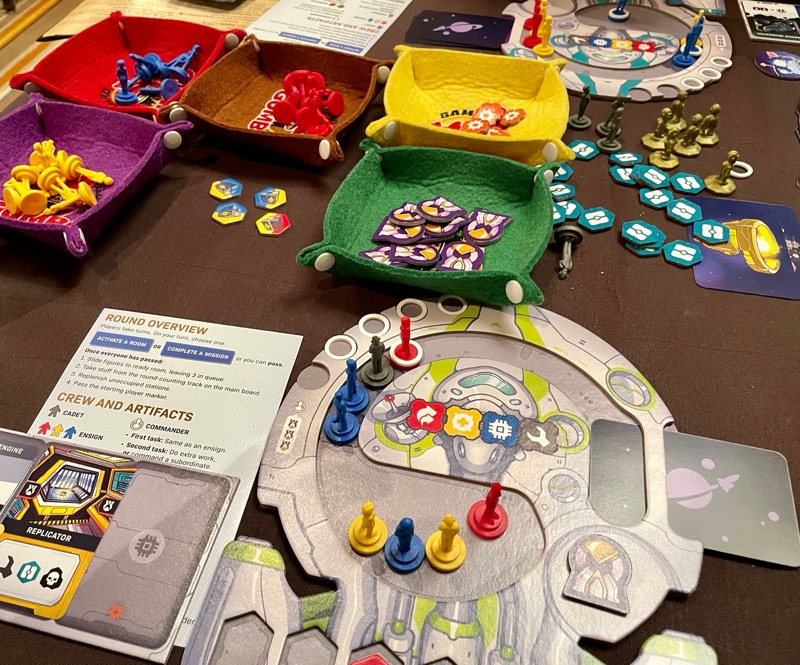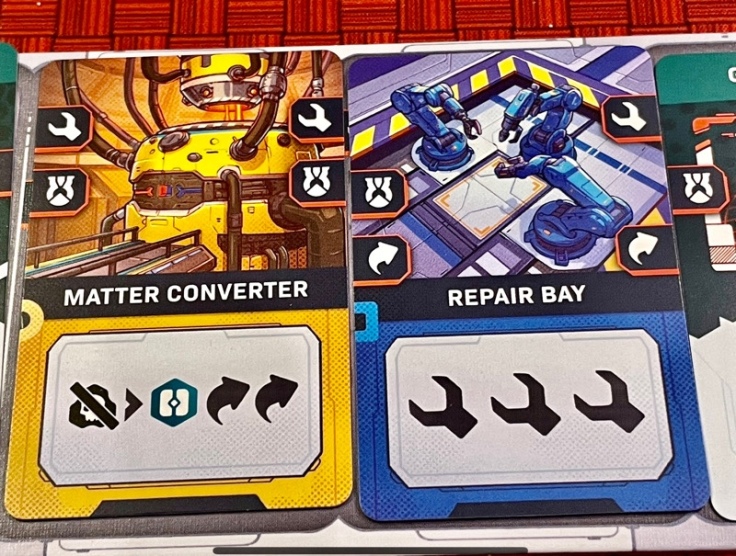In July of 2020, armed with masks and bored from two months of being stuck in our house, my wife and I traveled to Utah for the re-opening of the National Parks.
We hiked every day during our trip there. We got into a rhythm of waking up with the sun, cooking breakfast over our burner, packing up camp, and finding the next park. Every park, even the state park ones, had something magical to discover. But one of the parks that made the biggest impression on me was Arches National Park. My mom and dad had raved about it on one of their last trips before he died in 2013, and just as my dad had told me, it was spectacular.
About mid-way through our big hike that day, we ended up in very rocky territory, climbing up and around silent boulders that rumpled the landscape in a fashion so alien to me, a flat-lander from Louisiana. At one point, we had to shimmy sideways up a wall, with a tiny walkway about the width of our hiking boots that exactly recreated Mario’s journey up to tackle Kong. To say I was nervous is an understatement.
Traversing this walkway up to the top demanded balance. If you leaned too far into the rock, you weren’t going to advance, and of course, leaning the other way would result in the “sudden stop” that creates the need for a walking boot on the trip home. It wasn’t easy, but we made it, and it prepared me for an even more perilous, even scarier journey across the top of one of the sheer walls that give the park its name.
When I was playing Starship Captains the other night, for some reason my trip to Arches bubbled up during the game.

It was just an image of me and SneauxBunny, next to each other on the rocks, keeping our balance. It reminded me that my love for euros has changed over the years. I still enjoy, and actively seek out, the “beige is the rage” bland euros that the NameFather and the Board Game Ambassador and I used to talk about on Gumbo Live!
But more and more I find myself wanting to play thematic euros, games that really lean into the setting of the game. Games where the author pushes hard to meld the mechanics of the game tightly to the thematic journey.
I’m not a game designer, but I imagine that it’s a delicate balance, a push and pull between crafting a clever puzzle that makes Reviewers write things like Innovative! Interesting! Unique! and creating stand up moments where the entire game depends on a flip of a card or a roll of a die. Walking that fine line is hard, but when a game does it right — putting together an interesting new theme and using familiar mechanics in ways that make sense and are intuitive as you play….ah, that’s just cardboard gold, isn’t it.

I bet you look for those games, too, or else you’d probably be reading someone else’s blog. I think I found one for you, on a recommendation from Bryan Barnes in the Gumbo who spied this game at GenCon. Any game with a space theme is going to be on my radar, and it has worker placement (of a sort, there’s no real competition for spots, though) so I was aware of the game. But how exactly does Peter Hoffgaard, the designer, successfully marry theme and mechanics?
Let’s boldly geaux … you know the drill.
Starship Captains is a new game published by CGE. It was one of their big Essen releases this year, and is getting a lot of good buzz. It plays from one to four players, and I’ve played it at two to four, each play ranging from an hour to just a little bit above ninety minutes. (Rob from the Board Boys podcast told me his two player plays with both players experienced at the game only take about 35-40 minutes. Sounds about right).
The box has a big, bold, colorful look with gorgeous art that instantly recalls, oh I don’t know, some familiar space TV series from the 60s that you might have heard about. No, not Lost In Space, I’m talking the original Star Trek. My sons, who are much hipper than I am, said it reminded them of the aesthetics of the Orville (a show that I should like but since I’m not in middle school any more, I don’t.)
The game is actually pretty simple, although the decision tree gets a bit more heady as the game goes along. Players are relatively brand new captains of a starship with a crew fresh from training at some “wink-wink” Academy. Each player has a bunch of workers, little plastic maples with the coolest touch that they don’t all have the same pose. For some dumb reason, I got really excited about that.

The workers come in four colors — red ensigns handle navigation (movement on the big galaxy board filled with colorful planets, space stations, and pirates); yellow ensigns are in charge of ridding the galaxy of the pirates; blue ensigns help you upgrade your computer with ongoing effect bonuses, better ship actions, and end game scoring opportunities.
And then, there’s the lowly gray cadet. She is good for removing damage on your ship, but like our favorite mechanic from Firefly, she’s very sharp and can be trained up quickly to any one of the other ensigns. Just give her a chance, you’ll see what she can do.

That would be thematic in itself, having four different crew members, each with their unique abilities. They can help you score big points, too. Use that navigator to move to a nearby planet. Punch a pirate in the face when you get there, and get an android as a bonus for doing so. Ask that android to help your tech ensign to go to the planet and communicate with the locals.
That last bit is the main focus of the game in terms of scoring points. Each planet has a “mission”, and most of these scenarios will be very familiar to fans of weekly TV series about exploration and negotiation. Have the right ensigns (or the ‘wild’ androids) in your ready area and you can complete the mission for points and bonuses.

Get the right bonuses, and you can bump up your standing with the three factions in the game. Your prestige with the factions is tracked one three separate boards, that each give bonuses as you “negotiate” with them. Plus, getting far down the track will trigger events that are random for each game, some of them very helpful and some of them a little nasty. I though that this part of the game would be fiddly and distracting, but it turns out to be essential to buttoning up the elements of the “explore and negotiate” theme that the author is definitely going for.
You know how some games try to use flavor text to artificially drum up some interest in the theme of the game? Starship Captains doesn’t fall to that trick. Instead, they use gorgeous art, appropriately named missions, and mechanics/thematic elements on the bonuses to instantly recall classic TV episodes or sci-fi movie tropes. It didn’t happen every turn, but frequently, someone would show off a card and note how the mission tied perfectly with the artwork on it. Kudos to whoever worked hard to marry those cards and the thematic elements together.

Back to the gameplay. Players will continue to use their cadets and ensigns each round, and smart players will spend resources to upgrade their cadets to ensigns (making them a little bit more powerful and useful on missions) or upgrading ensigns to commanders. In fact, that is one of the most satisfying parts of the game. Doing so has great cost, making it feel like the accomplishment it is, but commanders give two big bonuses. Players can then either get double rewards off of ship actions or missions, OR get another ensign of that color to jump into the ready area to do more actions.

I must give a caveat here. If anything I write here sounds like advice or strategy tips, don’t listen to me. I am absolutely terrible at this game. I am routinely in last or close to last place. But, that out of the way, I have noticed that the players at the top figure out pretty quickly that chaining bonuses that you get in upgrading the tech on your ship, and getting just the right amount of commanders to get better bonuses from completing missions or pulling in exhausted workers back into the ready area, seems like a pretty big key in winning. I say that because the winners seem to take more turns than me each game, complete more missions, and just have more stuff.

Two hours into our journey into space, I usually have a nice computer decked out with cool upgrades. If I’m lucky, I’ve snagged the tech upgrade that lets me hyper jump all over the map avoiding the nasty pirates. If I don’t, I’ll probably be taking a lot of damage as fly around or fight with the pirates, and damage, unfortunately, is negative points. I usually have two commanders (I’ve never gotten more than three in a game), and I’ve usually completed one of the faction tracks.
I say all this because even as we total up the points, and my score hovers in the bottom half of the group, I’m kind of proud of what I’ve accomplished. The bucket of bolts that Command assigned me now possesses better hull plating and some wunderkind advancements. My crew started pretty raw, but now I’ve pieced together a functioning team with a few commanders that are the take charge kind of leaders we need in space. And my cadets have all graduated to running the areas of the ship that appeal to their interests. We’ve explored new planets, encountered funny and poignant moments, and came home to the family safe and sound.
Peter Hoffgaard walked that tight walkway among the boulders that make up our Golden Age of Cardboard. Hoffgaard authored a game that tells a story every time, and even without noticing it, every action taken in the game makes sense in terms of what the theme is all about. Starship Captains is one of the best games of 2022.
Until next time, laissez les bons temp rouler!
A copy of this game was purchased at BGG Con 2022.


Leave a comment